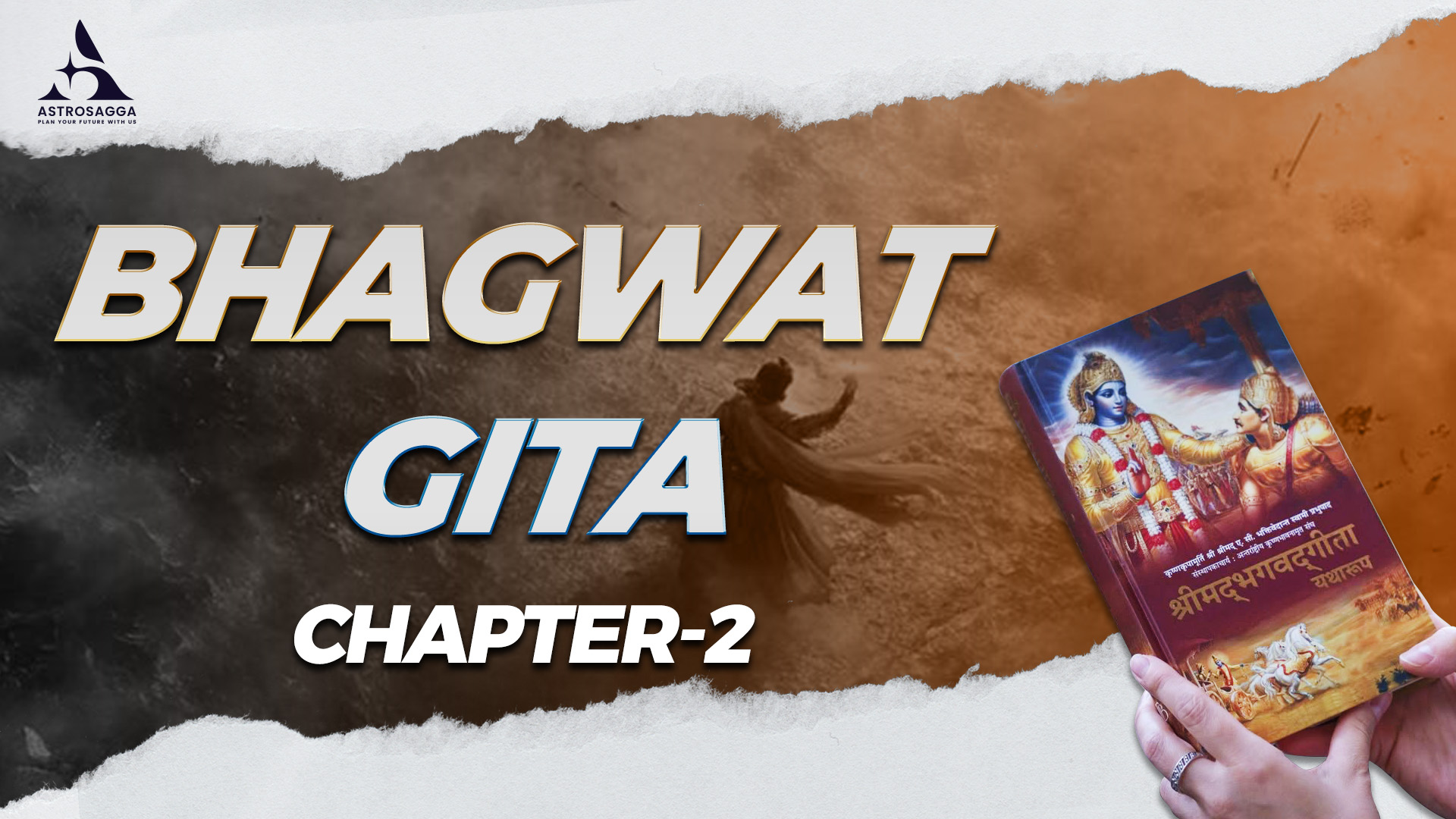Why Bhagavad Gita Chapter 2 is a Manual for Life
The Bhagavad Gita, one of the most respected scriptures in the world, is not just a religious text — it's a practical guide to life. In Chapter 2, titled "Sankhya Yoga", Lord Krishna begins his philosophical teachings to Arjuna, who is standing confused and emotionally shattered on the battlefield of Kurukshetra.
This chapter addresses common human issues: fear, indecision, emotional turmoil, ego, and the search for clarity. If implemented, the teachings of Bhagavad Gita Chapter 2 can help anyone live a life of peace, purpose, and inner stability.
1. The Eternal Nature of the Soul (श्लोक 2.20)
न जायते म्रियते वा कदाचिन् नायं भूत्वा भविता वा न भूयः।
अजो नित्यः शाश्वतोऽयं पुराणो न हन्यते हन्यमाने शरीरे।।
Translation:
The soul is never born, nor does it ever die. It has never come into being, does not come into being, and will not come into being. It is unborn, eternal, everlasting, and ancient. It is not destroyed when the body is destroyed.
Life Application:
This verse teaches us that our true identity is the soul, not the temporary body. When you understand this, fear of death, disease, or aging starts to dissolve. You begin to act from a space of courage, compassion, and clarity.
Read Also - Bhagavad Gita Chapter 1: Practical Tips for Life
2. Focus on Action, Not the Result (श्लोक 2.47)
कर्मण्येवाधिकारस्ते मा फलेषु कदाचन।
मा कर्मफलहेतुर्भूर्मा ते सङ्गोऽस्त्वकर्मणि।।
Translation:
You have a right to perform your prescribed duties, but you are not entitled to the fruits of your actions. Never consider yourself the cause of the results, nor be attached to inaction.
Life Application:
One of the most quoted shlokas, this verse teaches the principle of Karma Yoga. Focus on your duty and efforts, not the outcome. This reduces stress, increases performance, and helps you live with detachment and discipline.
3. Balanced Mindset is Real Yoga (श्लोक 2.48)
योगस्थः कुरु कर्माणि सङ्गं त्यक्त्वा धनञ्जय।
सिद्ध्यसिद्ध्योः समो भूत्वा समत्वं योग उच्यते।।
Translation:
Be steadfast in the performance of your duty, O Arjuna, abandoning attachment to success and failure. Such equanimity is called Yoga.
Life Application:
We often get disturbed by success and failure. But this verse urges us to be mentally stable and emotionally strong in both situations. Emotional maturity helps in decision-making, leadership, and spiritual progress.
4. Controlling Desires Brings Peace (श्लोक 2.70)
आपूर्यमाणमचलप्रतिष्ठं समुद्रमापः प्रविशन्ति यद्वत्।
तद्वत्कामा यं प्रविशन्ति सर्वे स शान्तिमाप्नोति न कामकामी।।
Translation:
As the waters enter the ocean, which is ever being filled yet remains unmoved, so the desires enter a person who is at peace; not the one who desires them.
Life Application:
Desires never end. But peace comes not by fulfilling every desire, but by rising above them. Learn to remain stable, content, and detached like the ocean — full, yet calm.
5. From Desire to Destruction (श्लोक 2.63)
क्रोधाद्भवति सम्मोहः सम्मोहात्स्मृतिविभ्रमः।
स्मृतिभ्रंशाद् बुद्धिनाशो बुद्धिनाशात् प्रणश्यति।।
Translation:
From anger comes delusion, from delusion loss of memory, from loss of memory the destruction of intelligence, and from the destruction of intelligence, one perishes.
Life Application:
This verse describes the chain reaction of emotional downfall. It begins with uncontrolled desire, leading to anger and finally destruction. Being aware of your emotional triggers helps prevent mistakes and maintain peace.
6. Wisdom Comes from Inner Satisfaction (श्लोक 2.55)
प्रजहाति यदा कामान् सर्वान् पार्थ मनोगतान्।
आत्मन्येवात्मना तुष्टः स्थितप्रज्ञस्तदोच्यते।।
Translation:
When one gives up all desires that have entered the mind and remains satisfied in the self alone, then one is said to be a person of steady wisdom.
Life Application:
Sthitaprajna or one of steady wisdom is calm, content, and free from emotional rollercoasters. By practicing self-awareness and controlling desires, we can reach this state of true mental strength.
7. Know Your Real Self Beyond the Body (श्लोक 2.13)
देहिनोऽस्मिन्यथा देहे कौमारं यौवनं जरा।
तथा देहान्तरप्राप्तिर्धीरस्तत्र न मुह्यति।।
Translation:
Just as the soul passes through childhood, youth, and old age in the body, similarly, the soul passes into another body at death. The wise are not deluded by this.
Life Application:
Understand that you are not your body, job, or appearance. You are the soul. This helps in building true confidence and reduces fear of change and aging.
8. Detachment is the Way to Peace (श्लोक 2.71)
विहाय कामान्यः सर्वान् पुमांश्चरति निःस्पृहः।
निर्ममो निरहंकारः स शान्तिमधिगच्छति।।
Translation:
One who abandons all desires, lives free from longing, and is without a sense of ‘I’ and ‘mine’ — attains peace.
Life Application:
Detachment is not giving up things, but giving up dependence on them. Practice letting go of ego, expectations, and ownership — and discover true peace within.

How to Apply Bhagavad Gita Chapter 2 in Daily Life
Here are simple ways to implement these divine teachings:
Daily Reflection: Read one shlok every morning and write your thoughts.
Mindful Action: Focus on effort, not outcome.
Emotional Control: Observe desires and anger without reacting.
Self-Identity: Meditate on the thought — “I am the soul, not this body.”
Let Go: Practice detachment in small things — like responses to praise or blame.
Conclusion: The Timeless Power of Bhagavad Gita Chapter 2
Bhagavad Gita Chapter 2 is a masterclass in self-management, spiritual wisdom, and emotional resilience. Whether you're facing a crisis or just want to improve your day-to-day life, its teachings are applicable to everyone — anytime, anywhere.
By implementing these timeless lessons, you can move from confusion to clarity, stress to strength, and fear to faith.
Ready to apply these teachings in your life?
Talk to an expert astrologer or spiritual guide at AstroSagga and begin your personal journey with the Bhagavad Gita’s wisdom.












